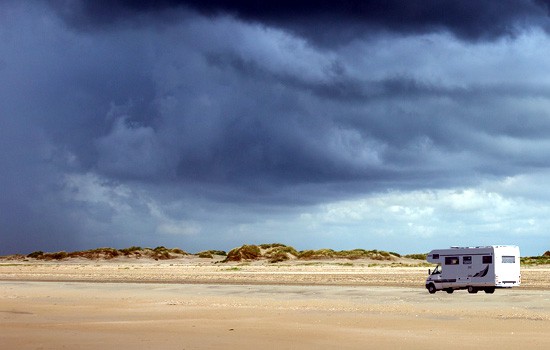sallylillian
LIFE MEMBER
On the 15th of September there was a terrific electronic storm at Tavira, Portugal, we were on the Algarve motorhome park there. It took out the site WiFi and a number of electric points. My electric cable had its bollard connector shattered. Not burnt in any way and the house 230 vac and 12 vdc all worked fine. I changed the hook up cable.
2 days later we went to leave and the Atego would not start. It went through its checks, briefly displayed 4 events, dashes for the air tanks and then a warning box about the brakes. The engine would not turnover. The buttons on the steering wheel were inoperable so I could not clear the warning or interrogate the menus. I was eventually taken by breakdown truck to Mercedes Faro. The Atego is 24 vdc. One week later they find 2 fried CAN bus control gateways. They have stated that they must have been damaged in the storm from what they can see. These gateways were hidden well under the dash inside the vehicle. Parts arrive on Tuesday so hopefully we will be on our way.
However I am very concerned as to how the CAN bus was compromised, there is no external evidence of a lightning strike. None of the house systems are damaged that I know of. The only thing I did find was the fuse to the heated windscreen was blown.
Could the electric storm have somehow penetrated the glass and surged through the heating wires and through the ground connection hit the CAN bus? We had the EP jacks down and the slide out. These will be interconnected to the engine, I would have thought, but only through the D+??
I would appreciate any constructive comment, which I appreciate is very difficult without actual hands on examination. Also I would like to understand how I can protect my DC systems in future.
Thank you
2 days later we went to leave and the Atego would not start. It went through its checks, briefly displayed 4 events, dashes for the air tanks and then a warning box about the brakes. The engine would not turnover. The buttons on the steering wheel were inoperable so I could not clear the warning or interrogate the menus. I was eventually taken by breakdown truck to Mercedes Faro. The Atego is 24 vdc. One week later they find 2 fried CAN bus control gateways. They have stated that they must have been damaged in the storm from what they can see. These gateways were hidden well under the dash inside the vehicle. Parts arrive on Tuesday so hopefully we will be on our way.
However I am very concerned as to how the CAN bus was compromised, there is no external evidence of a lightning strike. None of the house systems are damaged that I know of. The only thing I did find was the fuse to the heated windscreen was blown.
Could the electric storm have somehow penetrated the glass and surged through the heating wires and through the ground connection hit the CAN bus? We had the EP jacks down and the slide out. These will be interconnected to the engine, I would have thought, but only through the D+??
I would appreciate any constructive comment, which I appreciate is very difficult without actual hands on examination. Also I would like to understand how I can protect my DC systems in future.
Thank you



